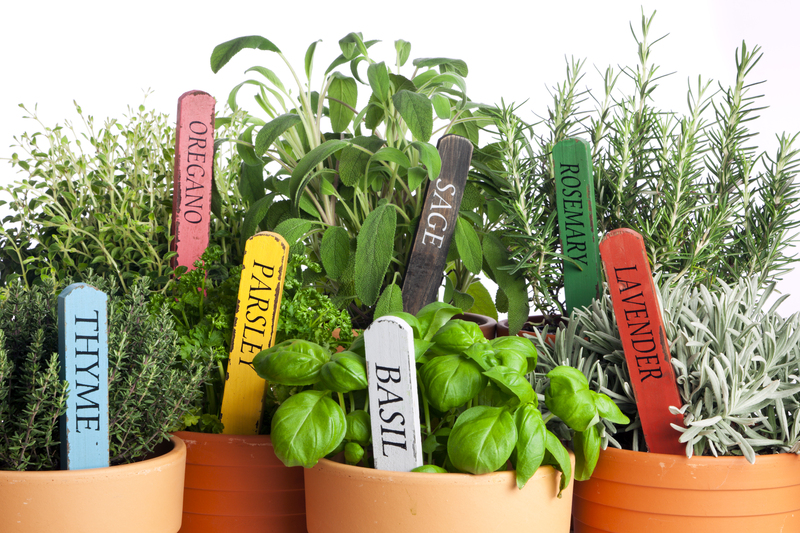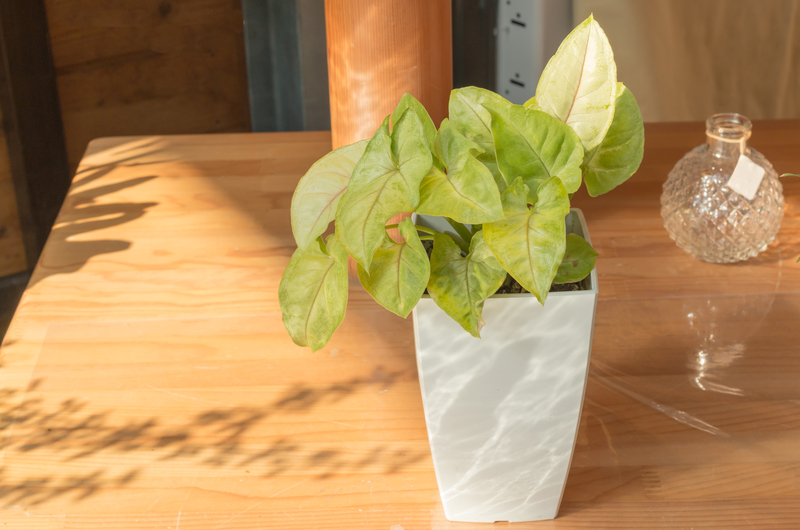Three Proven Ways to Design and Maintain a Moveable Garden
If you're passionate about gardening but constrained by limited space, frequent moves, or want a more dynamic outdoor arrangement, a moveable garden is the perfect solution. Portable gardens are trending among urban dwellers, apartment renters, and sustainability enthusiasts alike for their flexibility, efficient use of space, and mitigation of property limitations. In this comprehensive guide, you'll discover three proven ways to design and maintain a mobile garden, along with expert tips to maximize plant health and create a lush, thriving environment anywhere.

What is a Moveable Garden?
A moveable garden--also known as a modular garden, portable garden, or mobile garden--refers to any gardening arrangement where plants and growing infrastructure can be relocated with ease. These gardens are not fixed to one spot, making them ideal for renters, small spaces, balconies, rooftops, and for those who want to follow the sun or adapt their greenery with the seasons. From container gardens and raised mobile beds to vertical gardens on wheels, there are endless creative ways to bring life to even the smallest areas.
Key Advantages of a Moveable Garden
- Maximum Flexibility: Move your garden to catch more sunlight or protect from severe weather.
- Space Saving: Perfect for balconies, patios, decks, or anywhere with limited space.
- Soil and Pest Control: Portable solutions are easier to manage for soil health and pest issues.
- Seasonal Versatility: Relocate containers indoors or to sheltered areas during extreme weather.
- Accessible for All: Ergonomic designs can accommodate gardeners with limited mobility.
1. Container Gardening: The Classic Moveable Garden Solution
Getting Started with Container Gardens
Container gardening remains the foundational approach to mobile gardens. This method involves planting herbs, vegetables, flowers, or even shrubs in pots, planters, window boxes, or decorative bins. With a vast array of containers on the market, you can tailor your garden's look and portability to match your lifestyle and design aesthetic.
- Materials: Terracotta, plastic, ceramic, wooden, or recycled materials
- Sizes: Small pots for herbs all the way up to large planters for small fruit trees
- Mobility Add-ons: Select containers with built-in wheels or use sturdy plant caddies for effortless movement
How to Design a Moveable Container Garden
- Choose the Right Container: Consider plant size, root depth, and growth rate. For example, deep pots suit tomatoes and peppers, shallow bowls are perfect for leafy greens and herbs.
- Ensure Drainage: Always use containers with proper drainage holes. Well-drained soil prevents root rot and promotes healthier plants.
- Strategic Placement: Arrange your plants based on sunlight patterns in your space. Move containers as needed to optimize light exposure as seasons change.
Maintaining a Healthy Portable Garden
- Watering: Container plants dry out faster. Check soil moisture regularly, and install self-watering systems or drip irrigation if possible.
- Fertilizing: Frequent watering leaches nutrients. Use organic or slow-release fertilizers for robust growth.
- Pest and Disease Management: Inspect leaves for issues. Isolate unhealthy plants to prevent spread.
Pro Tip: Elevate your designers' vision by mixing container styles and heights. This not only looks attractive but lets you accommodate different plant sunlight and water needs.
2. Modular Raised Beds with Wheels: For Versatile, Moveable Garden Beds
The Benefits of Mobile Raised Garden Beds
Raised beds have long been favored for better soil drainage, improved accessibility, and easier weed control. By adding casters or wheels to the bottom of your beds, raised garden beds become fully moveable. These mobile gardens are ideal for patios, rooftops, and even driveways, allowing you to reconfigure your outdoor living space at will.
- Deep Root Space: Ideal for root vegetables and crops requiring more soil volume
- Customizable Size & Height: Build to suit your space and ergonomic needs
- Mobility: Easily roll beds to maximize light or make room for entertaining
How to Build a Moveable Raised Bed Garden
- Choose Materials: Use rot-resistant wood (like cedar or redwood), galvanized metal, or food-grade plastic. Ensure your chosen material is lightweight enough for transport.
- Attach Quality Wheels: Heavy-duty, locking casters are essential for safety and stability. Make sure the wheels can bear the weight when filled with soil and plants.
- Add Soil and Plant: Fill beds with premium garden soil enriched with compost. Plant according to depth needs--mix flowers, vegetables, and herbs for a bountiful, attractive display.
- Arrange and Rotate: Move beds seasonally or as needed for sunlight, wind protection, or easy harvesting.
Maintaining Modular Raised Bed Gardens
- Weeding & Mulching: Stay on top of weeds and apply mulch to retain moisture.
- Watering: Use soaker hoses or drip lines for even irrigation.
- Seasonal Soil Care: Rotate crops, replenish nutrients with compost, and amend as necessary to keep soil healthy and productive.
Did You Know? Modular raised beds are also ideal for urban farming and community gardens where plots may need to be moved or shared seasonally.
3. Vertical and Hanging Gardens: The Ultimate Space-Saving Moveable Garden Ideas
The Power of Going Vertical
When floor space is at a premium, look up! Vertical and hanging gardens transform blank walls, railings, or fences into lush, living displays. With lightweight structures, pockets, or towers, these portable gardens can be installed, removed, and rearranged quickly--ideal for renters and modern lifestyle needs.
Designing a Mobile Vertical or Hanging Garden
- Select Your System: Consider wall-mounted modular shelves, felt planting pockets, stackable bins, or vertical planters on stands with casters.
- Plan Your Plantings: Combine trailing plants like ivy or pothos, upright growers like herbs or succulents, and blooming flowers for color, texture, and interest.
- Ensure Support & Stability: Use secure, weight-rated hooks, rails, or stands as needed. A rolling vertical stand allows effortless repositioning.
- Prioritize Accessibility: Arrange plants so they're easy to reach for watering and maintenance.
Care and Upkeep for Vertical Gardens
- Watering: Check for even moisture; vertical and hanging gardens often dry out faster than traditional beds.
- Pruning: Trim plants to prevent overgrowth and ensure healthy air circulation.
- Fertilizing: Use diluted, frequent nutrients - especially in smaller soil environments.
Expert Tip: For ultimate flexibility, use lightweight felt planters or plastic wall pockets--these can be unhooked and moved or swapped out as needed, giving you infinite arrangement possibilities.
General Tips for Designing and Maintaining a Moveable Garden
1. Soil & Drainage Best Practices
- High-Quality Soil: Your moveable garden's success starts with nutrient-rich, well-aerated soil. Amend periodically with compost.
- Don't Overwater: Portable gardens are prone to water-logging or drying out. A moisture meter can help gauge when to water.
2. Selecting the Right Plants
- Compact Varieties: Choose bush, dwarf, or patio cultivars for vegetables. Compact perennials and annuals work best for limited soil spaces.
- Sunlight Needs: Map out your space to understand daily light movements and choose shade- or sun-loving plants accordingly.
3. Moveable Garden Mobility Tips
- Even Weight Distribution: Make sure containers and beds are well-balanced to avoid tipping when moved.
- Ease of Transport: Invest in sturdy caddies, carts, or planters with integrated wheels for stress-free mobility.
4. Pest and Disease Prevention
- Sanitize tools and pots: Reduce disease risk by cleaning tools and containers when repotting plants.
- Monitor for Pests: Especially when moving garden elements indoors, watch for aphids, spider mites, and fungus gnats.
Moveable Garden Design Inspirations
- Edible Balcony Garden: Mix herbs, leafy greens, strawberries, and dwarf citrus trees in containers with colorful flower accents.
- Mobile Pollinator Haven: Use wheelable raised beds filled with bee-friendly asters, lavender, and milkweed to attract pollinators--even in concrete jungles.
- Patio Privacy Wall: Create a lush screen with a rolling vertical planter filled with tall grasses, vines, and shade-loving ferns.
- Seasonal Swaps: Rotate blooms and crops with the seasons--move summer tomato plants to the sunniest spot and switch to pansies and violas in winter.

Frequently Asked Questions About Moveable Gardens
What are the best plants for moveable gardens?
Compact vegetables, herbs, strawberries, salad greens, succulents, and small perennials thrive in containers and vertical systems. For mobile raised beds, try root crops like carrots and beets as well as bush tomatoes and peppers.
How do I prevent my portable garden from drying out?
Regular watering is crucial. Consider using mulch, self-watering planters, or installing drip irrigation. Group together containers to improve humidity retention and monitor moisture levels frequently.
Can I bring my moveable garden indoors in winter?
Absolutely. One of the biggest advantages of a moveable garden is the ability to relocate tender plants indoors during cold months. Use grow lights to supplement natural light if needed and ensure good airflow.
Conclusion: Create Your Own Moveable Garden Oasis
Whether you're working with a balcony, a sunny slice of driveway, or a small backyard, a moveable garden puts your dream of flexible, beautiful green space within reach. By adopting container gardens, modular raised beds with wheels, or vertical and hanging gardens, you turn every inch into a productive, dynamic landscape. Remember to start with great soil, choose the right plants, and use durable, mobile containers and beds for effortless relocation and continuous beauty.
With a little creativity and the right strategies, your moveable garden will thrive season after season--no matter where you call home!
For more expert tips and moveable garden design inspiration, follow our blog or share your own moveable gardening success stories below!